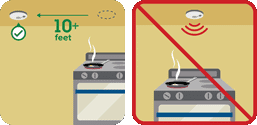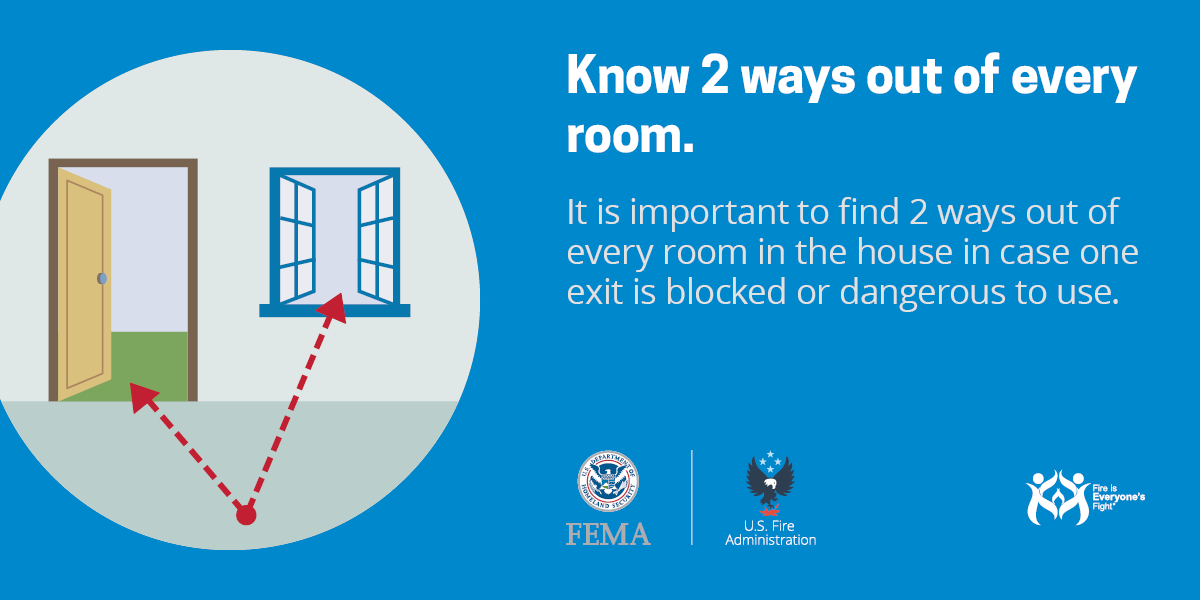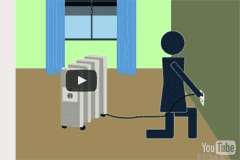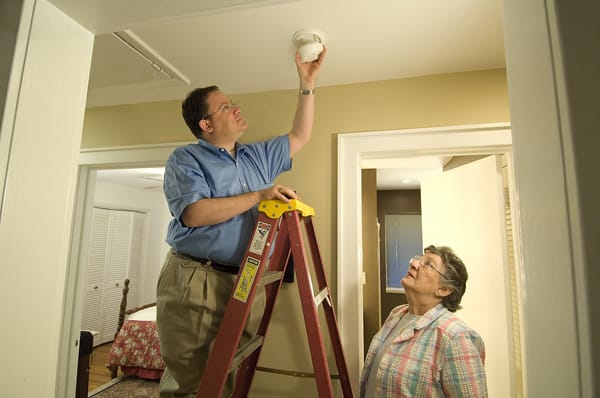You play a major role in communicating important fire safety and prevention information to the public. Resources on this page will help you make the most of these teachable moments.
Sample fire prevention and safety press releases
Need a head start writing a fire prevention press release for your fire department?
Here are 10 press releases that address seasonal and other fire safety topics.
Image gallery
Here you’ll find a variety of visual tools for print, social media, TV and websites depicting best practices in fire prevention and fire-safe behaviors.




Working with the News Media: Fire Spokesperson’s Media Guide
Before an interview
- Put fire safety and prevention messages in your own words so they seem natural to you.
- Make note of fire safety and prevention-related services the fire department and local businesses offer that the community may not be aware of; for example, escape planning, free smoke alarm installation programs, etc.
- Consider using statistics to create powerful “sound bites.” You can find national, state and county fire statistics at:
- Our fire statistics page
- Center for Disease Control and Prevention’s (CDC) WISQARS™ (Web-based Injury Statistics Query and Reporting System database)
- National Fire Protection Association
- State and local health departments. Visit the Association of State and Territorial Health Officials for contact information.
- CDC WONDER (Wide-ranging Online Data for Epidemiologic Research)
- Practice saying your sound bites so you are comfortable with them. Try to keep them between 6 and 10 seconds in length.
- “In the U.S. someone dies in a home fire every 3 hours.” National Fire Protection Association (NFPA)
- “Every X days, someone in our state dies in a home fire. These deaths can be prevented.”
During an interview
While it always is important to answer a reporter’s specific questions about the fire, it’s also important and appropriate for you, as a community leader, to provide additional safety and prevention information during the interview.
No one knows more than you do how tragic a home fire can be. There may be times when you feel an on-the-scene interview isn’t the best time to talk about what could have been done to prevent a fire or the larger issues behind home fires. In these cases, follow-up or second-day stories may be more appropriate opportunities to provide safety and prevention messages.
Here are some ways you can communicate prevention information. Keep safety and prevention messages closely linked to the current fire story; the more tailored the message, the more likely it will capture the media’s attention.
- Mention safety and prevention tips and facts. Remind people about how to prevent fires from occurring and what they can do to lessen or avoid injury during a fire.
- “Cooking is the leading cause of home fires and home fire injuries in the United States.” U.S. Fire Administration (USFA)
- “When cooking, stay in the kitchen and keep an eye on the stove.”
- “Don’t overload extension cords or wall sockets. A fire caused by a faulty electrical system can destroy a home and everything in it within minutes.” Consumer Product Safety Commission (CPSC)
- “If a cooking fire starts, smother it with a pot lid. Never throw water on a grease fire.”
- “If there’s a fire, get out and stay out. Never go back into a burning home.”
- Mention smoke alarms. Smoke alarms save lives. But many homes do not have smoke alarms. Others have smoke alarms that don’t work. Similar to news stories about motor vehicle crashes, which almost always mention whether riders were wearing their seat belts, encourage reporters to mention whether the home had working smoke alarms. If this fact is not known at the time of the interview, follow up with the reporter once the investigation has determined this information and ask the reporter to mention it in any follow-up stories.
- “This is a good time to remind everyone that all homes should have working smoke alarms. Put smoke alarms on every floor of your home, including the basement. Also, in every bedroom and in the hallway outside of each sleeping area.”
- “All homes should have working smoke alarms. Contact your local fire department for more information about how to get smoke alarms for your home.”
- Provide statistics. Numbers that are meaningful to the viewer/reader can help them see just how serious the problem of residential fires is and compel them to take preventive action. National statistics provide the big picture, and local data can help drive the message home.
- “Older adults have a 2.5 times greater risk of dying in a fire than the population as a whole. (USFA) Practice safe smoking, safe cooking and safe heating in your home."
- “Heating is the second leading cause of home fires. (USFA) Never use the stove or oven to heat your home.”
- “There have been X more home fires in the county compared with this time last year. That’s a X percent increase. Call the fire department to schedule a free safety assessment visit.”
- Give a “Call to Action.” People often think about their personal situation when they hear about another person’s tragedy. They may want or need to do something, but may not know what to do or where to find information. You can empower people to protect themselves by providing clear, concrete action steps.
- Call the fire department at XXX-XXXX. We can help you create and practice a fire escape plan for your family.”
- “Here are 3 important things you can do to reduce your risk of injury from a home fire:
- Make sure your home has properly installed and working smoke alarms.
- Plan and practice a fire escape plan.
- In case of a fire, get out and stay out. Going back into a burning home can be deadly.”
- “Keep space heaters at least 3 feet away from anything that can burn, including furniture, blankets, curtains and paper products.” (USFA)
- Avoid “yes” and “no” answers. Instead, repeat the reporter’s question back in your answer. For example, if a reporter asks, “Why is it important for homes to have working smoke alarms?” you would answer:
“It’s important for homes to have working smoke alarms because” and then state your key point. - Direct the reporter to additional information and resources. Encourage the reporter to visit USFA or CDC for information and resources that will help complete their story. These resources include:
- Statistics and safety and prevention tips.
- A library of free, high-quality images and broadcast-quality B-roll video footage of fire safety and prevention scenes that can be downloaded quickly and used as supporting visuals.
After an interview
- Follow up with the reporter the day after the interview by phone or email. Ask if the reporter needs any additional information for his or her story. Offer to provide safety and prevention tips that may be used as a sidebar (a shorter article that accompanies a print article) or posted on the media outlet’s website.
- If the story has run, encourage a follow-up or feature story and offer to provide more safety and prevention tips or information about fire safety programs in the community.
- Provide information from the fire investigation that was not available during the interview, such as whether there were working smoke alarms in the home.
- Offer to serve as a resource for future safety- and fire-related stories.
Tips for working with the media
Whether you’re a seasoned veteran or a rookie at media relations, it’s always a good idea to keep these interview pointers in mind:
- Quickly scan this webpage before you begin an interview.
- Determine the 1 or 2 safety and prevention tips you want to mention in addition to the facts of the story.
- Prior to the interview, mention to the reporter that you’d like to provide a fire safety and prevention tip or direct people to additional information.
- Look at the reporter, not into the camera, during television interviews.
- Avoid answering the reporter’s questions with only “yes” or “no.” Always speak in full sentences.
- Remove sunglasses and chewing gum, and turn off your phone before conducting the interview.
- Ask for the reporter’s name, contact information and the name of the media outlet so that you can follow up with more information or suggest a feature story about fire safety and prevention.
- Provide your name and contact information in case the reporter has questions or needs more information.
- Emphasize the importance of including a safety and prevention message to the reporter. This may prevent the message from ending up on the cutting room floor.
Providing safety information is one of the most important things you can do as a community leader. It may feel strange or even pushy the first few times you take the lead and add safety and prevention messages during an interview. With practice, it will become more natural, even second nature, to share life-saving safety and prevention tips during interviews.
